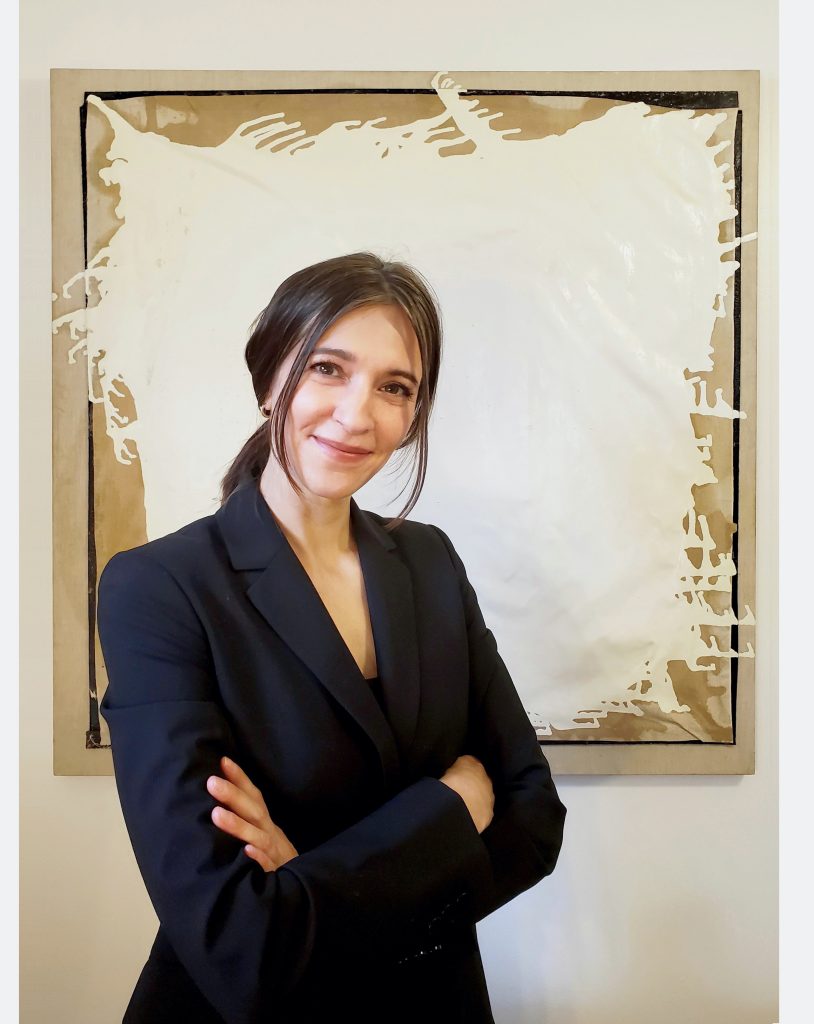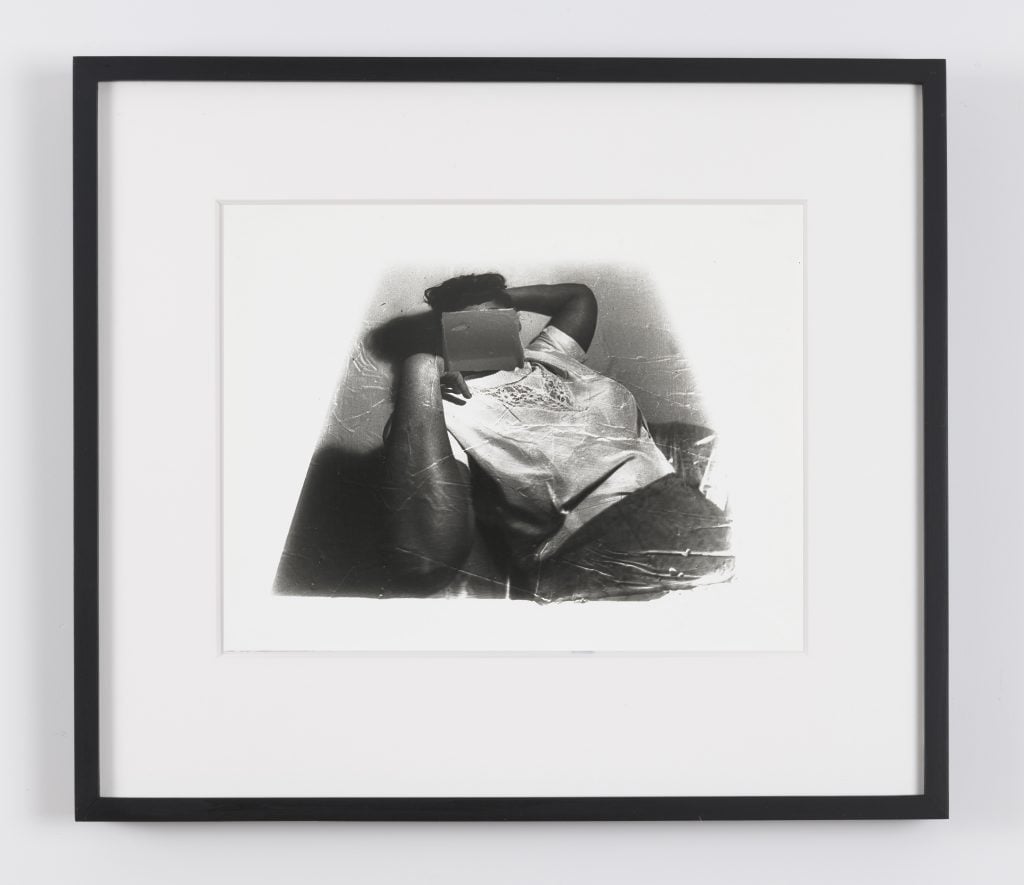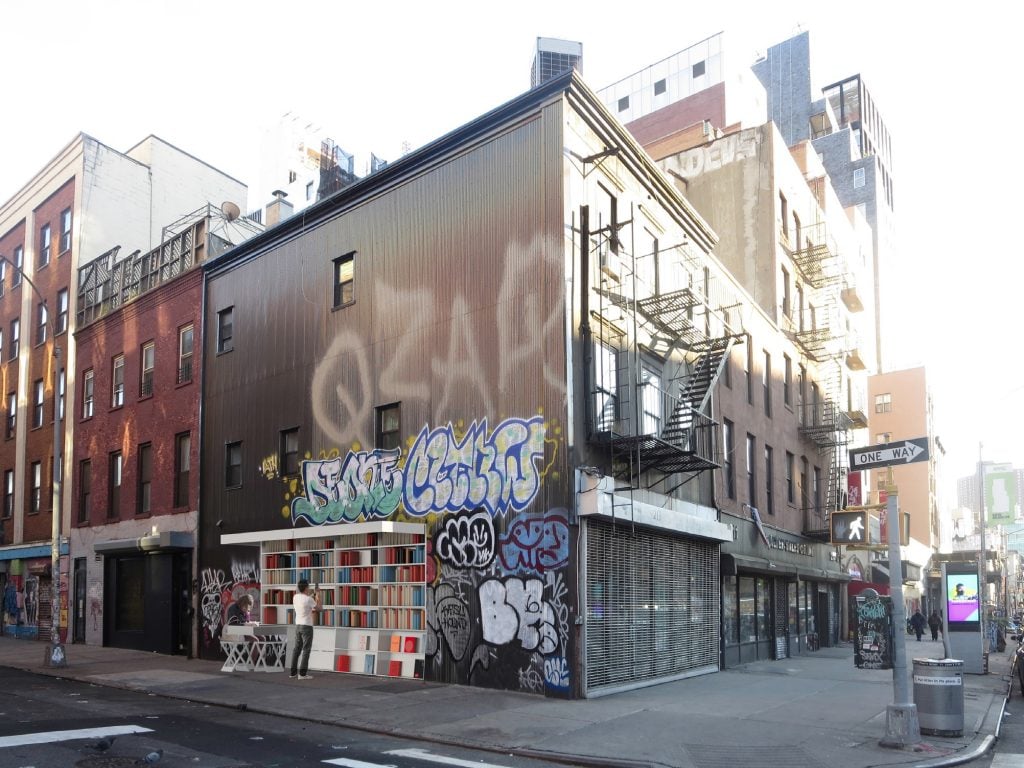Galleries
‘I’m Motivated by These Uncertain Times’: Why Candice Madey Is Returning to Art Dealing in New York City After a Four-Year Hiatus
Madey's new Lower East Side gallery seeks art world sustainability by connecting with other cultural sectors.

Madey's new Lower East Side gallery seeks art world sustainability by connecting with other cultural sectors.

Tim Schneider

Not many dealers would be prepared to debut a new gallery in the depths of a global crisis. But as Candice Madey would tell you, it helps if you’ve done it before.
Back in 2008, the investment bank Lehman Brothers imploded less than a week after Madey opened On Stellar Rays, the well-respected New York gallery that she helmed until 2017. Now, Madey has returned to the Lower East Side, in the midst of a very different type of worldwide stress test, to open an eponymous gallery with a new perspective.
Madey described the process of opening the gallery last fall as “a blur.” In January of 2020, she hoped to quietly begin welcoming visitors in May, then officially launch in the fall. However, life had other plans. The pandemic lockdown ultimately pushed her soft opening to September and all but eliminated the prospect of a grander launch.
Yet the delay turned out to be a blessing of sorts. “I’m motivated by doing things in these uncertain times,” Madey told Artnet News. “You can experiment and not be judged in the same ways. There’s a certain freedom in that.”

Darrel Ellis, Untitled (Mother), (ca. 1989–91). ©Darrel Ellis Estate, Courtesy Candice Madey, New York.
One significant change in Madey’s retooled gallery is evident in an exhibition she opened this past week: a solo presentation of works by the late multimedia artist Darrel Ellis. Rich in experimental pieces whose source material ranges from postwar Harlem to the AIDS crisis (which ultimately claimed his own life), Ellis’s estate is the first the dealer has represented.
The rewards and challenges here are intertwined: Ellis’s death and status as a relative unknown among today’s collectors demand that Madey undertake a different type of research than she’s used to.
“Normally, when working with living artists, I always read what they are reading or what they cite as influential leading up to the show in an effort to get inside their heads a bit and understand the motivation,” she said. “But here, that responsibility to represent the work is even greater.”
Fortunately, Madey has found other ways to ease the usual burdens of running a modestly sized gallery. Although her new venture occupies the same building that On Stellar Rays once did, at 1 Rivington, she now shares its three floors—as well as the rent and all associated costs—with two tenants of a similar spirit: the Metropolis Ensemble, an experimental chamber music group; and Buro Koray Duman, an architecture firm specializing in projects in the art and culture realms.
Other benefits of the arrangement have reinforced Madey’s belief that collective action and collaboration are the best way forward for small cultural businesses. Some of her collectors have become board members at Metropolis, for example, and the gallery and Duman have grown their client lists together. The three organizations also join forces for evening events ranging from roundtable discussions to intimate concerts inside the gallery.
Madey hopes to debut another such effort soon—this one based on her conviction that galleries and independent booksellers face many of the same challenges and opportunities. Inspired by the Parisian literary merchants along the Seine, she is seeking financing to build a handful of book stalls along the exterior of her building, which would allow her to host residencies for small publishers and bookstores from other cities. The project would also include a program of conversations and events bridging literature and visual art.

A rendering of the book stalls Madey hopes to permanently install outside her gallery. Courtesy of Buro Koray Duman and Candice Madey.
On one level, Madey said the initiative stems from her “mission to say ‘please don’t buy your books from Amazon.’” But it also encapsulates a broader philosophical aim that dovetails with her concerns about the gallery sector: What happens to culture when one behemoth crowds out all of the less powerful voices? How can competitors with fewer resources offer something sustainable with so little margin for error?
Madey believes galleries like her own will have to adapt to find answers, often in ways that are speculative or uncomfortable. For example, she recently began accepting payment in bitcoin and ethereum. “It hasn’t really taken off yet,” she said, “but I figure this is certainly part of our financial future, and the best way for me to learn is by doing.”
One thing that won’t change, however, is her focus on the necessity and longevity of physical exhibitions. Despite her self-described “obsession” with technology, she said she still fundamentally thinks art must be seen in person; otherwise, there’s an “energy that’s lost.”
Yet, at the same time, she is convinced that the months of quiet so many dealers and artists endured last year acted as a creative stimulus almost ready to flourish. “I feel like we’re all in some kind of metamorphosis phase, or some kind of cocoon,” she says. “I can’t wait until we emerge. It’s going to be beautiful.”